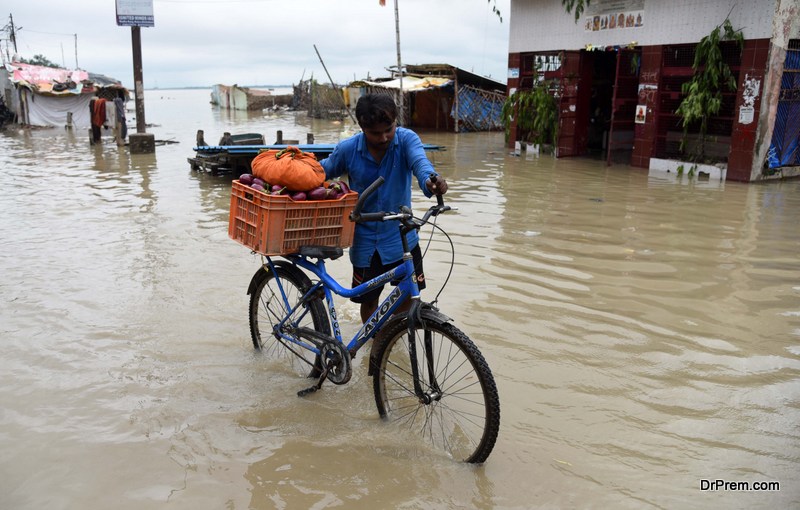India is a country where some regions are favored by the rain god. Perhaps, a little too much as every year brings devastating floods to some states such as Assam, Kerala and Bihar. Lives of humans and animals are endangered, and there is death and suffering all around. There are many reasons and one of them is global warming which is increasing the intensity of monsoon rains, especially in Kerala. Deforestation all over India is another reason. Let’s take a closer look as to the causes of frequent floods in India:
What are the causes of frequent floods in India?
The states of Assam, Kerala and Bihar are the worst affected every year, with floods wreaking havoc in the lives of the people. There seems no end to this phenomenon, and even though global warming may be ca contributing factor, what can the other top reasons be and is there a solution?
Floods in Kerala: Natural or man made
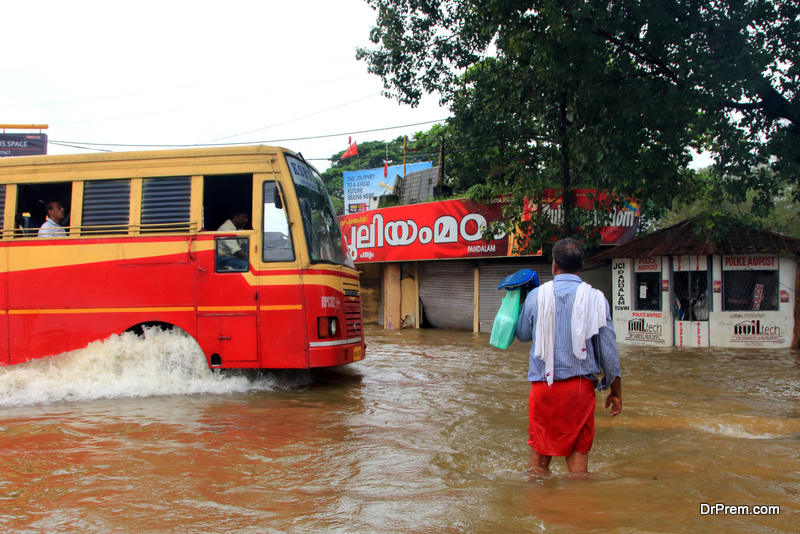 Frequent floods in India are a reality, and Kerala these days seem to be one of the states which have been reeling under heavy rains and floods. Meteorologists say that the low pressure conditions over the western coast of India have caused floods in Kerala.
Frequent floods in India are a reality, and Kerala these days seem to be one of the states which have been reeling under heavy rains and floods. Meteorologists say that the low pressure conditions over the western coast of India have caused floods in Kerala.
According to environmental scientists, Kerala is experiencing a man made crisis. The Gadgil committee report, which had aimed for the protection of the ecologically fragile mountain ranges was not heeded and the measures it outlines were not implemented. Unscientific developmental projects and human incursions into the eco sensitive areas are the human causes for the Kerala floods.
The Western Ghats region, in which human incursion into ecological areas is the most, i.e. the region of coastal Karnataka, Kerala and Konkan-Goa, received 7,158 mm rainfall, accounting for 46% of total rainfall in entire India.
Deforestation, another of the top reasons for floods in Kerala and Bihar, causes the soil to loosen leading to flash floods and landslides. Many people in Kerala have lost their lives as they were trapped in unexpected mud slides. In 2018, the some areas of the state could not be reached by train or by roads, as they were completely submerged.
Rather than damage control after the event, the government should take measure to curb human activities which lead to floods. As for heavy rains due to changing climate, which is on the rise, there are measures which have to be addresses so the high intensity impact can be lowered.
Floods in Assam: causes and possible solutions
Assam has faced the wrath of the mighty Brahmaputra for decades. It is an expected, annual calamity which has killed many and displaces laths of people every year. Floods wreak havoc on the animals of the many sanctuaries, killing rhinos and other endangered species.
The top reasons for frequent floods in India, including in Assam, are natural and manmade.
Earthquakes
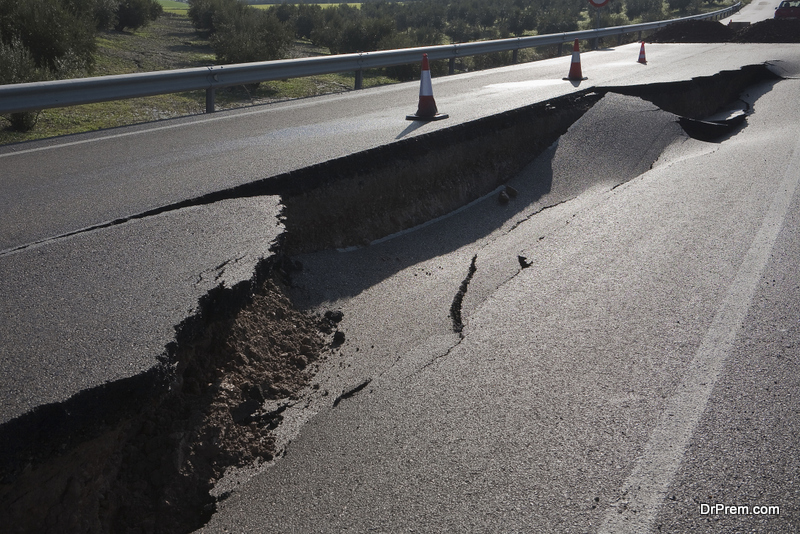 Assam is prone to frequent earthquakes, which leads to landslides. The debris from the landslides ends up in the river bed, increasing the level of the river bed. As this keeps happening throughout the year, during the rainy season, the waters of the river rise up to dangerous levels quite soon.
Assam is prone to frequent earthquakes, which leads to landslides. The debris from the landslides ends up in the river bed, increasing the level of the river bed. As this keeps happening throughout the year, during the rainy season, the waters of the river rise up to dangerous levels quite soon.
Human incursion/encroachment
Illegal encroachment into the water bodies and forest lands disturbs the local ecosystem which causes floods. The government is aware of the problem but nothing much has been done to control encroachment.
Bank erosion
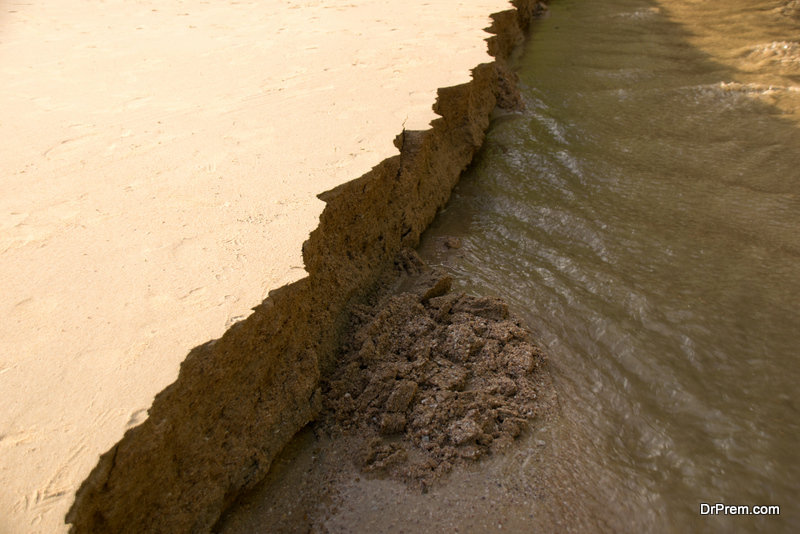 The Barak and Brahmaputra river and their tributaries have caused the banks to erode. Approximately 8000 hectares of land erode away, every year. This has increased the width of the Brahmaputra river by 15 kms almost.
The Barak and Brahmaputra river and their tributaries have caused the banks to erode. Approximately 8000 hectares of land erode away, every year. This has increased the width of the Brahmaputra river by 15 kms almost.
Dams
One of the human causes of floods in Assam, and also for the frequent floods in India, is the release of water from dams. The unregulated water release causes floods in the plains, which destroys property and homes of thousands of people.
Dredging of Brahmaputra river
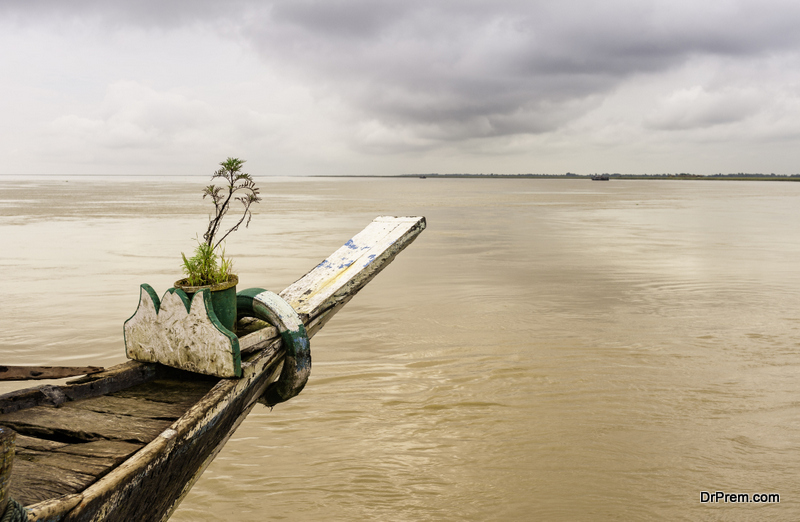 One of the solutions to reduce the intensity of floods in Assam is dredging the Brahmaputra’s 891 km, from Sadiya to Dhubri. This would reduce the river bed level and while it has been sanctioned quite some time back, it has not been implemented till now, though the Assam Govt has said it has finalized tenders for the project.
One of the solutions to reduce the intensity of floods in Assam is dredging the Brahmaputra’s 891 km, from Sadiya to Dhubri. This would reduce the river bed level and while it has been sanctioned quite some time back, it has not been implemented till now, though the Assam Govt has said it has finalized tenders for the project.
Bihar floods: causes and solutions
Though there are common reasons such as deforestation and encroachment in all the states for frequent floods in India, every state has a separate cause due to the difference in topography. In Bihar, the floods were caused not by rains in North Bihar, but due to the heavy deluge in Nepal.
Climate change
 The high intensity of rains in a short period of time has led to frequent floods in India, this year. Climatologists claim that this is due to the effect of climate change caused by global warming. In just a matter of 24 hours, the whole of North Bihar witnessed floods which had not been experienced for more than half a century.
The high intensity of rains in a short period of time has led to frequent floods in India, this year. Climatologists claim that this is due to the effect of climate change caused by global warming. In just a matter of 24 hours, the whole of North Bihar witnessed floods which had not been experienced for more than half a century.
Nepal dam opened gates
Bihar’s northern border with Nepal has a huge number of rivers run through the Himalayas to the south of the state. The 12 districts in North Bihar were devastated by the floodwater breaching embankments, destroying bridges, snapping roads and damaging paddy fields, jute and maize crops. As Nepal opened the 56 gates of the Kosi dam, the three lakh cusecs of water, increased the water levels of rivers in Bihar, such as the Bagmati, Kosi, Kamka, Gandak etc. Millions of people were taken by surprise and were affected adversely due to the sudden floods.
The timing of the floods, July was unprecedented, and the government and people were unprepared for the floods which occurred due to the dam gates opened by Nepal, and the intensity of rainfall in Bihar itself. As Bihar is low lying, it had to bear the brunt of the large amount of water which was released by Nepal.
The state governments in all these states have to take precautions for floods, as it is unlikely that floods will not recur in the coming years. Detention basins, channel improvement and stronger embankments should be part of the damage control process, which is carried out with sincerity throughout the year.


